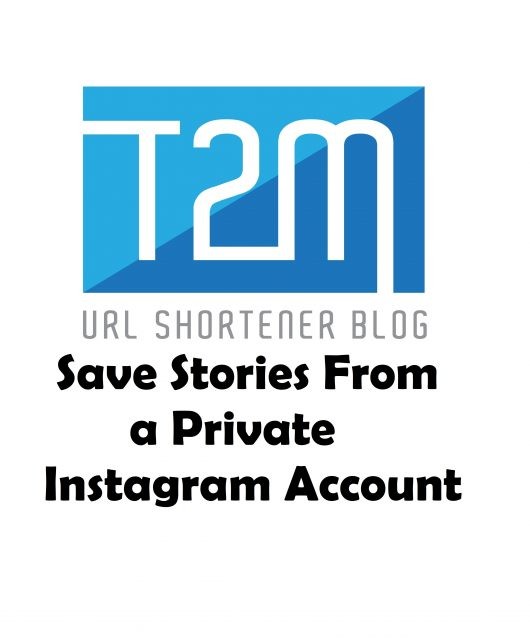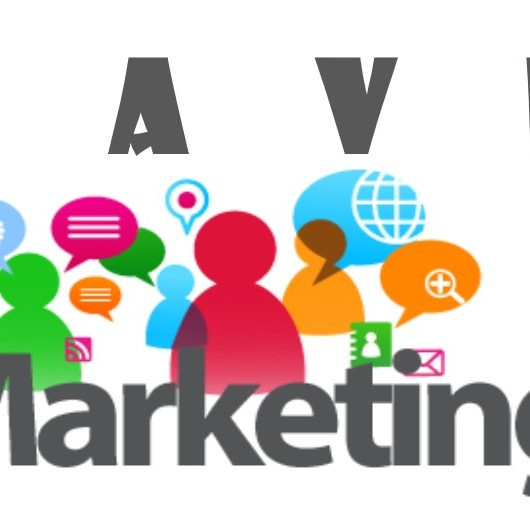For most smartphone owners, at least, it’s been years since social media expanded to occupy daily life. Facebook updates, Instagram posts, Twitter exchanges… it became an addiction featuring everything from reward mechanisms (likes, upvotes, comments, and followers) to powerful peer pressure combined with the fear of missing out.
Given its accessibility, place in popular culture, and focus on communication, social media understandably grew in importance as the reality of the COVID-19 pandemic became apparent — and when companies everywhere started working remotely, it helped with everything from distributing the details to sourcing advice from those with remote-working experience.
But that’s not all social media brings to the table: we need to consider its immense value as a marketing tool. Businesses still getting accustomed to being away from their offices won’t have any issues using Facebook as regular members, but what about doing all the promotional work they usually invest in? Maintaining a social strategy remotely is different, and can be tricky.
In this post, we’re going to set out some tips for not only maintaining but also optimizing a social strategy away from the comfort and advantages of conventional office life, learning heavily on virtual collaboration. Here we go:
Audit your lineup of SaaS tools
The SaaS industry is single-handedly responsible for the continued operation of so many businesses (essential or otherwise). While there were some businesses that were already capable of operating remotely with no issues, most were still clinging to the old-fashioned office model, and adapting was a major struggle for them.
Imagine if this pandemic had struck back before the modern SaaS industry existed — back before internet infrastructure could handle the traffic, and before cloud technology was sufficiently advanced to support the level of activity. It would surely have been so much worse. Companies would have struggled to deploy software installations using physical media, before struggling further to get them working adequately well on underpowered hardware.
Today, it’s easy to take the SaaS world for granted, but it’s also easy to fall into a rut of using the same old tools and never thinking about what else is out there. Now that circumstances have forced change, you should take the opportunity to look for alternative social strategy tools, taking advantage of sites that review all types of software and list best-in-category options.
You most likely use a SaaS tool to compose and schedule your social media posts in advance (if you don’t, then that’s a change you should have made a long time ago). If so, consider whether you might save some time and effort by changing that tool. And then there’s something key like sharing URLs: instead of trying to rely on social platforms shortening them for you, you can use your own URL shortening tool to save a lot of time while maintaining consistency.
You can even think about the platform you use for your site, because not all platforms are equal. Some, like WordPress, have myriad free social integrations that you can draw upon. Others, particularly in the ecommerce world, aren’t so convenient. Those running Shopify can use native Facebook functions, for instance, while those running PrestaShop (as PrestaShop reviews note) must purchase modules to use social features.
You do need to factor in the time needed to make a change, of course. Swapping between tools will present something of a learning curve, possibly requiring you to struggle with changed options for weeks or even months — and changing your site platform will be even tougher, needing a complex site migration. But if you really want to achieve total optimization, the short-term inconvenience may be a necessary sacrifice.
Commit time to general social media research
It’s always vital to be aware of the zeitgeist when executing a social media strategy, because a hashtag that drives a lot of traffic one day can be considered outdated the next — but the need has risen even higher since the pandemic started. Social media users are always reactionary, but now they’re reactionary and understandably sensitive.
Working remotely means saving time on commuting and having more flexibility, and employees can put some of that saved time into keeping up with social media trends and events. Which brands are faring well? What are the obvious mistakes being made? Consider the importance of corporate ethics in modern business, then factor in how companies are being judged for their actions during a time of crisis.
No one wants to be seen as overly self-promotional while so many people are suffering, getting fired, or even losing their lives. Smart brands are going for easy win-wins like temporarily offering their services or products at reduced rates (or even for free). Within the ceaseless torrent of social media updates lies incredible insight into what people are looking for.
Invest in ergonomic home office equipment
Regular social media activity chiefly goes through smartphones, as noted, but marketing work shouldn’t. Yes, some social channels have character limits, and all of them call for brevity, but consider the impracticality of tapping out (and editing) numerous posts via a smartphone keyboard. It’s a fast way to establish or exacerbate repetitive strain injuries.
It’s faster, easier and better to route everything through computers. Even mobile-only apps like Snapchat feature APIs that allow third-party tools to hook into them (more on this later) — but moving to regular keyboards doesn’t eliminate the risk. It merely ameliorates the situation by making things significantly more comfortable. It’s still perfectly possible to sustain an injury typing on a PC or laptop keyboard.
There are two significant takeaways from this. Firstly, you mustn’t allow anyone (even yourself) to carry out a lot of social marketing or outreach from a mobile device. It might sound like a nice idea — you can sit more comfortably while holding a smartphone — but it’s a recipe for disaster. Secondly, simply ensuring that every employee has a functional computer isn’t enough. Provide the funding for every worker to establish an ergonomic home office.
Don’t just sign off on anything, though, or else you’ll end up paying for luxuries. Consider everything that could confer serious benefits. Multi-monitor setups can help with reviewing large amounts of data. Different keyboard types — using various layouts, formats and switches — can suit different people, making typing faster and more comfortable (numerous efforts have been made to develop ergonomic keyboards over the years: Rtings has a great roundup). Then there are all the necessary accessories: USB hubs, audio cables, and anything else required.
Expensive? Perhaps, yes, particularly if you go for high-end monitors. But it’ll be worth it, not only for your social strategy but also for business in general. There’s no saying when lockdown measures will be fully lifted — and if there’s even a possibility that you might continue to work remotely due to saving money on office rental, surely you stand to save far more in a few months than you could spend on a large number of home office setups.
Hold ideation sessions using video conferencing
High-level social media work requires a lot of ideation because it’s so creatively broad, and it’s key to get input from as many people as possible at that stage. It’s all too easy to come up with an idea that sounds great in the moment but would never actually achieve anything if deployed. What you need is a group of creatives bouncing ideas off one another, so how should you do it?
At a distance, you could use something as simple as a Slack thread, and that approach could work somewhat well — but what are you losing? Relative to the standard office meeting, you’re losing the valuable context of both audio tone and body language. An idea presented in text might not be interpreted in the manner intended, but in audio it could be much clearer.
This is why you should get into the habit of holding video conferences for ideation. Being able to hear one another’s voices will help team members to focus and get creatively inspired, and will ensure that flawed ideas are either redeemed or scrapped entirely before too much time is put into working on them. (It’s all too easy to waste time on ultimately-unused ideas.)
Handle the conferences the same way you’d handle in-person meetings and generally try to imagine that you’re all together and business is operating as usual — though always keep the reality of remote working in mind, if only because it’s a useful prompt for relevant social media content.
To enhance your remote social media strategy, consider exploring online tools that facilitate collaboration and creativity. One noteworthy area is video editing. Platforms offering the ability to edit videos online can streamline your content creation process. These tools provide a user-friendly interface, allowing team members to collaborate on video projects from different locations. You can seamlessly integrate edited videos into your social media posts, making your content more engaging and dynamic. As remote work becomes the norm, embracing such digital solutions ensures your social media strategy remains adaptable and effective in the ever-evolving landscape of online communication.
Provide comprehensive brand guidelines
When you have everyone in the same office, it’s easy to get social media drafts fully reviewed. Anyone unsure about whether their post is fitting for the brand can quickly consult their nearest colleague, and even bring in their superior without proving too disruptive. It isn’t so easy to do this when everyone is working remotely. Scheduling can start to diverge, and pressure to be productive can push employees to be proactive by posting without proper permission.
This isn’t inherently a bad thing. Requiring everything to be approved by a manager (or even one person in particular) ensures quality, but it also slows things down, often unnecessarily. If you trust your employees to do what they’re supposed to, then you should leave them to get on with things — but only if they have access to comprehensive brand guidelines.
Great brand guidelines detail not just elements like logos and slogans but also tone and suitable topics. Having a consistent brand voice is essential for developing a memorable identity: muddy the waters with some ill-fitting posts and you’ll cause a lot of confusion. If part of your brand identity is going the extra mile to help customers, check that everyone on the team understands how important that is.
Having guidelines will also make it so much easier to onboard new employees. Due to mass layoffs, there’s a lot of talent on the market at the moment, and enduring companies would do well to select the best — but even the best social media professionals need time to get up to speed. Having access to a full range of brand elements will greatly speed up their development.
Proactively engage with prospects and customers
Sitting back and letting people come to you can be a viable strategy in the event that you’ve done the necessary work to make your company accessible. If you’ve put a lot of time and effort into SEO, earning some prominent rankings for relevant terms, then you’d normally be able to rely on a consistent stream of organic visits — and if you’d picked up a large number of social media followers, you’d get to post as usual and see decent results.
The problem with passivity at the moment is that people have bigger things to worry about than consumerism, and it’s pushing many purchasing thoughts aside. Ecommerce in general is flourishing because of what people need (or think they need), but plenty of product types are seeing decreased interest because people aren’t feeling like spending money.
Unless whatever you bring to the table is commonly considered essential, those rankings and follower counts might not be helping you as much as you’d expect them to. That’s where being proactive becomes so valuable. Reaching out to social media followers (and relevant prospects who aren’t currenting following you) provides two major benefits:
- It helps you to stand out from comparable businesses. When attention is otherwise going elsewhere, you can step in and remind people that your company is still in operation and still capable of providing them with something useful and worth their time.
- It gives you the chance to show humanity. People increasingly choose to get their products and services from companies they consider laudable and worthy of their support. By engaging with them, you can show some personality and help your brand to come across as something other than a faceless profit machine.
Whenever you notice a relevant thread on a social media platform, step in and get involved. If you spot a post from someone you think might appreciate your assistance, make the first move to initiate conversation. Provided you don’t push too hard, they’ll appreciate the effort.
Wrapping up, it’s entirely possible to maintain and improve your social strategy while working remotely. Much of the process will be essentially unchanged, and those elements that have changed can still be handled very effectively. Use these tips to help you achieve better social outreach and marketing results.











